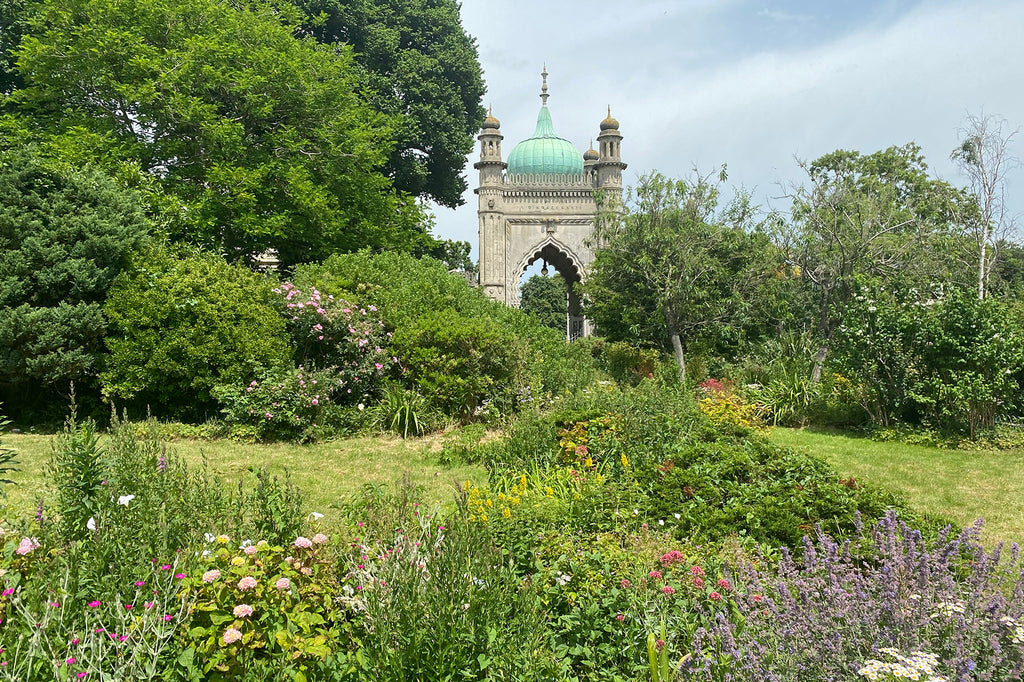Secret Gardens: The Royal Pavilion's Botanic Garden, Brighton
Posted by SECRET GARDENER

Inside the Royal Pavilion's Botanic Garden, the UK's only fully restored Regency Garden
The Royal Pavilion was originally built over 200 years ago as a coastal retreat for King George IV, and subsequent monarchs. The palace's grand design expanded the original Pavilion, and took 8 years to construct. It stands as a unique blend of Regency character with Indian-inspired architecture on the exterior, and Chinese-style interior decor.
The architect of the Pavilion was John Nash, who also designed famous landmarks including Marble Arch and Buckingham Palace.
History of the Pavilion Garden
First created in the 1800s, this botanic garden is inspired by the countryside. Regency-style gardens were typically English countryside inspired, and picturesque; meaning they had a foreground, middle distance, and a background (like a painting) with all elements combining to create the overall landscape.
 Above: The architecture of Brighton Pavilion
Above: The architecture of Brighton Pavilion
In the Pavilion Garden, the "nature-assisted" style of gardening frames the Pavilion through its planting. Today, it is maintained by a manager and a group of volunteers. The space is looked after organically, without the use of weed killers or pesticides, which has encouraged wildlife to flourish.
 Above: the flowering plants in the garden
Above: the flowering plants in the garden
During our visit in the summer we saw a variety of flowering plants, including rock roses, yellow broom, peonies, hollyhocks, foxgloves, and daisies.
 Above: the planting in the Pavilion Garden
Above: the planting in the Pavilion Garden
The plants have been strategically placed along the winding paths in an informal style to look more natural. The many gorse shrubs provide shelter for many the insects and birdlife in the garden.
The palm trees which can be seen over the top of the shrubs mirror the tropical-inspired interior of the Pavilion, which has many palm tree columns in its rooms.
 Above: Hollyhocks in the garden
Above: Hollyhocks in the garden
The local government bought the Pavilion in 1850 from Queen Victoria, who detested them due to the lack of privacy she had there. She used the money from the sale to commission the construction of Osborne House and its gardens on the Isle of Wight.
The Royal Pavilion has since been restored and open to the public, and they remain open year-round.
Follow us on Instagram @StormFlowersGarden to see a closer look at these magnificent gardens.
How to get there
4/5 Pavilion Buildings,
Brighton BN1 1EE
Travel: Brighton Pavilion and garden is a 15 minute from Brighton Station, with rail links to London Victoria, London Bridge, and destinations along the coast and Sussex.
Entry: Free for the garden, £17 for adult entry into the Pavilion. If you travel to Brighton by train, keep hold of your tickets as these can be used to gain 2 for 1 entry into the Pavilion. Book tickets on the Brighton Museums website. No on site parking available.
Opening times: 9.30am-5.45pm (April - September) but check the website for up to date opening times and closure dates.

